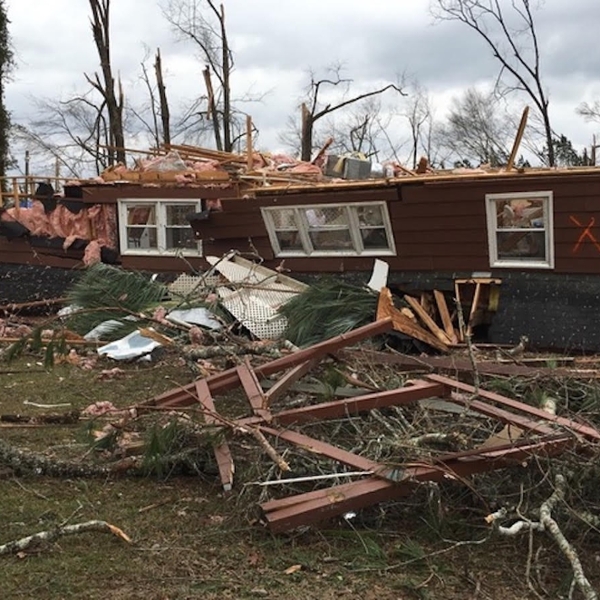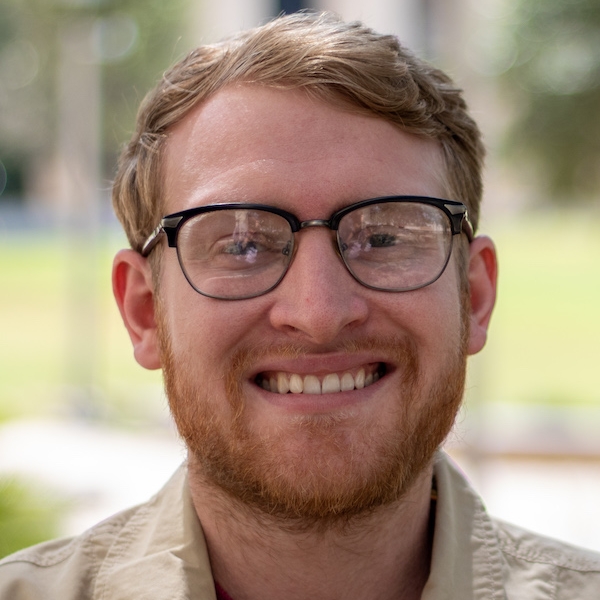New Tornado Casualty Analysis Will Improve Future Predictions
Texas A&M Geography’s Tyler Fricker recently published research providing insights into where tornado casualty rates are highest and how to improve casualty prediction models.
Oct 28, 2019
Why are tornado casualty rates higher in some regions than others?
Dr. Tyler Fricker, visiting assistant professor in the Department of Geography at Texas A&M University, recently published research in the Annals of the Association of American Geographers that gives insights into tornado casualty rates across the United States and casualty prediction models.
“My interest was in trying to better understand tornado casualty events across the country,” Fricker said. “We have a pretty good understanding of some broad-scale factors that influence tornado casualties, but what we don’t have is a great understanding of the community-level or placed-based factors that might influence those casualties.”
The goal of Fricker’s research was to define and identify particularly devastating tornadoes and the communities that were most impacted by those tornados.
With an analytical model he previously developed, Fricker combined data from individual tornados with additional socioeconomic, demographic, and physical variables from the areas surrounding where each individual tornado occurred. With this information inputted into the model, the model outputs the number of causalities (injuries and fatalities) that would be expected from the tornado.
The casualty estimate is then compared to the actual number of casualties that occurred during the tornado. The comparison provides important information about which areas are more or less vulnerable to tornados than experts expect.
“Through these comparisons, you can start to understand which tornados cause many more casualties than we expect, which tornados cause roughly the same number of causalities we would expect, and which tornados did not have as many causalities as we would expect,” he said. “Those are all different questions.”
Fricker’s research primarily focused on the instances of higher than expected casualty rates.


A Nationwide Tornado Casualty Analysis
The study was purposefully done at a nationwide scale to discern the regional similarities and differences across the country that might not be evident without a evaluating the entire country.
“You don’t want to shut different areas of the country off,” he said. “They are each going to have unique variabilities, and we are going to need to understand all of them if we are actually going to reduce the number of tornado casualties.”
The results of Fricker’s study suggest that there is a lot more to be learned from the variability in tornado casualty numbers. For example, regions of the country that are already known to be susceptible to high casualty events (e.g. Southeast), had even higher casualty rates than expected when compared to model predictions.
Since the model already accounts for the factors that tornado casualties are most commonly attributed to, such as mobile home ownership and low income, it suggests that there are other variables that are not being taken in to account.
“These numbers are unusual even when accounting for how many mobile homes were in the tornado’s path,” he said. “The question becomes: is there something going on there besides the mobile homes and the income level, that are driving these high casualty rates?”
Fricker hopes to continue his research by expanding the project to include an interview-based approach to find out what factors in the community may be influencing the high rates of tornado vulnerability across the nation.
Dr. Fricker’s article was co-authored with Dr. James Elsner from Florida State University.
By Rhett Douris

